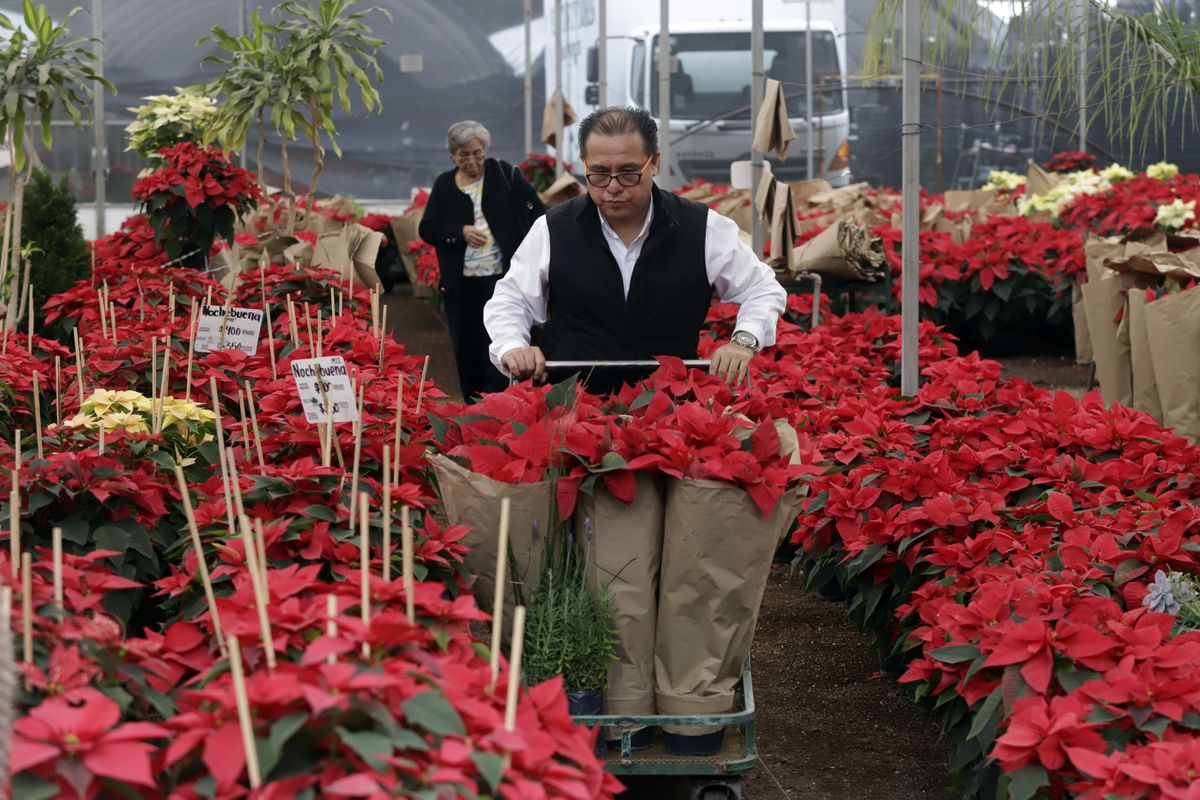It is said that Mexico gave the world the poinsettia, the symbol of the December festivities. The flower, also known as poinsettia or simply Christmas flower, celebrates its national day every December 8 and has great biocultural importance for the country. But before becoming the most representative flower of Christmas, the plant went through a series of changes ranging from its uses in everyday life, to the symbolism that was assigned to it at different times. Currently, its importance is so great that in the country there are 429 sites that bear the word 'poinsettias' in their name, mostly roads and urban settlements, according to the register of geographical names of the National Institute of Statistics and Geography (Inegi).
LEARN MORE
Huitzilopochtli, Christmas Carols and the Salvation of the Apocalypse: The First Mexican Christmas
Origin and Meaning of the Poinsettia
Christmas poinsettia – from the Latin, euphorbia pulcherrima, which means "the most beautiful" – is a flower native to Mexico and blooms mainly in the winter season. The story of how this flower became the symbol of Christmas can be told as a journey of three stops: first, in pre-Hispanic Mexico, passing through Taxco, to finally reach the hands of a well-known businessman in the United States who was in charge of popularizing it commercially.
In an interview with EL PAÍS, Laura Trejo Hernández, a researcher at the Institute of Biology of the National Autonomous University of Mexico (UNAM), shares that the poinsettia has a great biocultural importance for Mexico that dates back to pre-Hispanic times. The researcher points out that some of the oldest references to the plant can be found in the work Historia general de las cosas de la Nueva España, by Fray Bernardino de Sahagún. Thanks to these records, it is known that in pre-Hispanic times Christmas Eve was called cuetlaxóchitl, which in Nahuatl means 'flower that withers'. At that time, the plant was used in offerings and rituals, associated with warriors, and also used for medicinal purposes.
"In pre-Hispanic times it was associated as an offering flower. [...] She was generally associated with mother goddesses, for example, with the goddess Tonantzin. So it becomes clear to us that it was a flower of offering, of ceremony, and also a flower of ornament," says the researcher. Then, he explains that in the seventeenth century the Franciscans in Taxco, Guerrero, used poinsettias that grew in the ravines to decorate the nativity scenes or nativity scenes that represent the birth of Jesus. It is possible that the flower began to be associated with the Christian holiday of Christmas. "[In Mexico] we have other very beautiful plants, but they don't have this biocultural weight. Christmas Eve had it, and that catapulted it," he says.
From Taxco to the World: The Great Migration That Catapulted Christmas Eve to Fame
Trejo has devoted much of his career to poinsettia research. She recognizes herself as very passionate about the plant, and assures that she "loves it very much". The expert explains that the poinsettia as we know it today comes from the state of Guerrero.
LEARN MORE
Why do we put up the Christmas tree?
During the winter of 1828, American botanist Joel Roberts Poinsett was in Mexico as Prime Minister Plenipotentiary of the United States. Before leaving, Poinsett called a group of fellow naturalists to go on an expedition and export several shipments of plants and other materials to his home country. Records indicate that Poinsett found the flower in what is now the State of Guerrero, and made several shipments of poinsettia plants and seeds to the Bartram Botanical Garden in Philadelphia, where it was successfully cultivated by Robert and Ann Bartram Carr.
To test this hypothesis, researcher Laura Trejo and other specialists from the National Autonomous University of Mexico (UNAM) studied the genetic relationships between wild plants and plants grown in the United States. Thus, they concluded that plants from the state of Guerrero are the ones that have the closest genetic material to commercial cultivars from the United States. "The evidence makes it very clear to us that the relationship between Christmas Eve and Christian festivities is in Taxco with the Franciscans. Taxco is very important historically because that's where the relationship between Christmas Eve and Christmas occurs," says the specialist. "It's also very clear to us that it came from Mexico, mainly from Guerrero."
Curator Joel Fry on how @BartramsGarden introduced the POINSETTIA to the world. https://t.co/54NvJCguLD #poinsettia #AmericasGardenCapital pic.twitter.com/NUBRNjNzpv
— Bartram's Garden 🌱 (@BartramsGarden) December 14, 2016
But the poinsettia didn't catch on until decades later. Following its successful introduction in Philadelphia, the plant spread throughout the United States during the 1920th century. In the <>s, in Southern California, horticulturist and entrepreneur Paul Ecke began growing poinsettias in fields near present-day Hollywood and marketing them as a typical Christmas flower by taking advantage of the plant's blooming season. Since then, the poinsettia has become a symbol of the holiday festivities in the United States, and has even received support from universities and companies for the genetic modification of the plant through crossbreeding.
The poinsettia became popular as a Christmas symbol around the world, and in Mexico, for example, it celebrates its own national day every December 8 to remember its historical and cultural significance. The United States also celebrates Christmas Eve every December 12 in commemoration of the date of Joel Poinsett's death.
The poinsettia is a plant with a long history and tradition. Its beauty and symbolism have made it an indispensable element of the Christmas festivities, and the place it occupies today is indisputable for Dr. Laura Trejo. The specialist concludes that everyone should know the history of poinsettia, "so that everyone can see how beautiful it is, and see it as I see it," she says.
Subscribe hereto the EL PAÍS Mexico newsletter and receive all the key information on current affairs in this country

